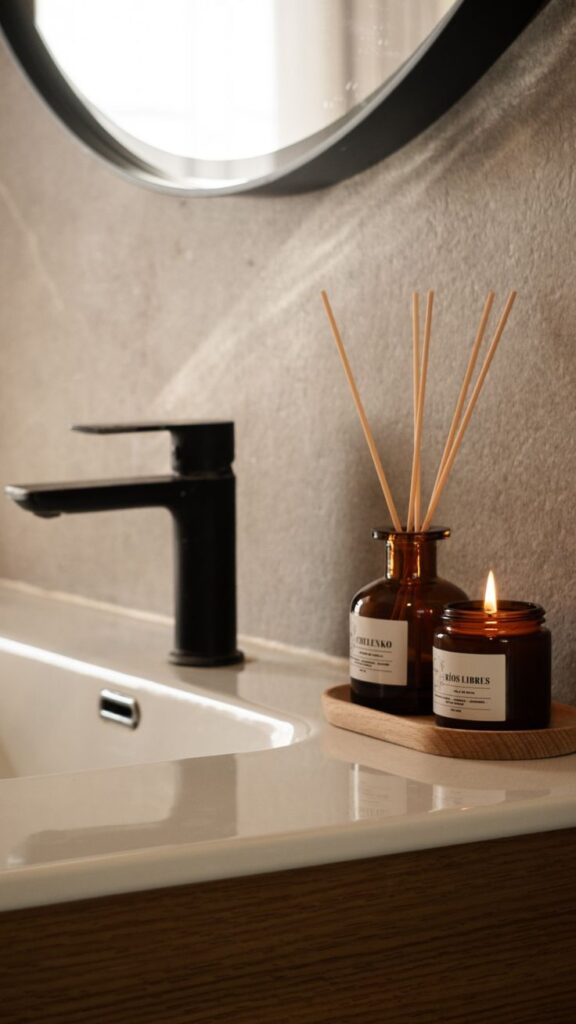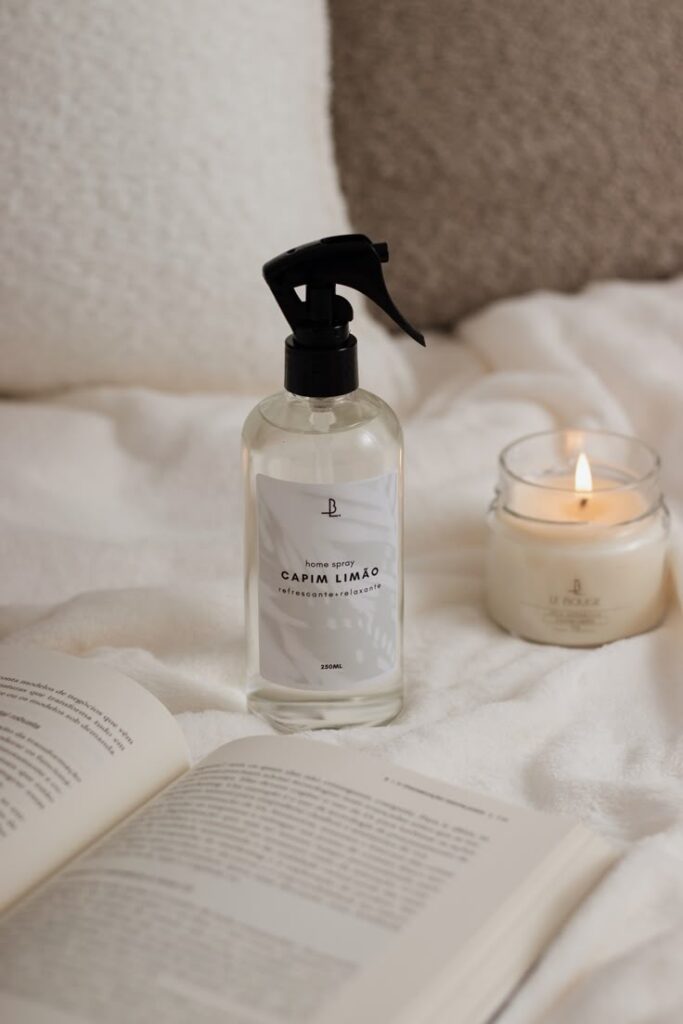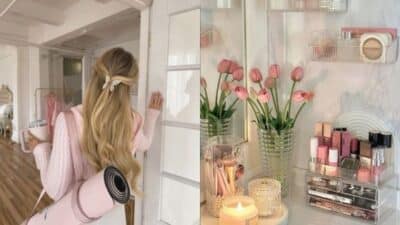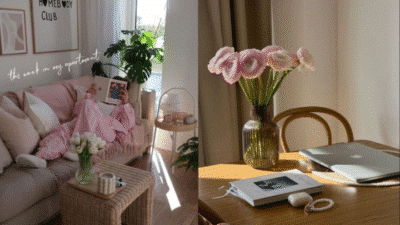The ambiance of your home isn’t complete without the perfect fragrance to complement your décor. Home scents have become an essential element of interior design, creating an invisible yet powerful dimension that influences mood and enhances living spaces. Choosing the right fragrance for each room can transform your home environment, evoking relaxation in bedrooms with lavender or fresh linen scents, while different aromas might better suit living areas or kitchens.
As we move through 2025, the world of home fragrances continues to evolve with sophisticated options ranging from candles and diffusers to room sprays. Each type offers unique benefits for distributing scent throughout your space. You might prefer the warm ambiance of a candle’s flickering light or the consistent fragrance release of a reed diffuser for maintenance-free scenting.
Home fragrance preferences are deeply personal, with options spanning fresh, floral, woody, and spicy scent families. Your choice might change seasonally or based on the specific function of each room in your home. Many experts suggest avoiding a mishmash of competing fragrances, instead opting for complementary scents that create a harmonious sensory experience throughout your living space.
Key Takeaways
- Home fragrances act as an invisible but crucial component of interior design that can significantly impact mood and atmosphere.
- Different rooms benefit from specific scent families, with lavender and fresh linen ideal for bedrooms while other spaces may require different aromatic approaches.
- The best home fragrance strategy creates a harmonious scent experience using complementary products like candles, diffusers, or room sprays suited to your preferences.


Understanding Home Scents
Home scents play a vital role in creating atmosphere and influencing mood throughout your living spaces. They engage one of your most powerful senses and can transform how you experience your home environment.
What Are Home Scents?
Home scents are fragrances specifically designed to enhance your living environment. They come in various forms including candles, diffusers, room sprays, wax melts, and essential oils. Each delivery method offers different intensity levels and longevity.
Home fragrances differ from personal perfumes as they’re formulated to disperse through larger spaces rather than cling to skin. They typically contain top notes (what you smell immediately), middle notes (the heart of the fragrance), and base notes (longer-lasting foundation scents).
Quality home scents are crafted using either natural essential oils derived from plants or synthetic fragrance oils. Natural options often appeal to those seeking purer ingredients, while synthetic versions provide consistency and sometimes greater longevity.
Your choice of scent can dramatically alter perception of a space—making rooms feel cleaner, more inviting, or even larger than they actually are.
Benefits of Using Home Scents
Home fragrances do more than just mask unpleasant odors—they actively contribute to your wellbeing. Certain scents like lavender and chamomile can reduce stress levels and promote relaxation after a long day.
Fragrances can establish powerful emotional connections and evoke memories. The smell of cinnamon might remind you of holidays, while ocean scents might transport you to past vacations.
You can strategically use different scents to define specific areas of your home. This technique, called “scent zoning,” helps create distinct atmospheres for different activities—energizing scents for work spaces and calming ones for rest areas.
Home fragrances also change perception of cleanliness. Fresh, clean scents like linen or cotton give the impression of a recently cleaned space, even between actual cleaning sessions.
Popular Scent Categories
Floral scents bring the garden indoors with varied intensity levels. Light florals like lily of the valley create airiness, while rich roses or jasmine add depth and luxury to your spaces.
Woody scents featuring cedar, sandalwood or pine create warmth and groundedness. They work exceptionally well in fall and winter months, adding coziness to living rooms and studies.
Citrus notes like lemon, orange and grapefruit deliver refreshing, clean energy to kitchens and workspaces. These bright fragrances naturally cut through cooking odors and boost mood.
Other popular categories include:
- Fresh/Clean: Linen, cotton, and ocean scents
- Gourmand: Vanilla, caramel, and baked goods
- Herbal: Mint, rosemary, and thyme
- Spicy: Cinnamon, cardamom, and clove
The best home fragrances often combine elements from multiple categories, creating complex, layered scent experiences.


Types of Home Fragrance Products
Home fragrance products come in various forms, each offering unique benefits for scenting your living spaces. The right product can transform your environment, enhance your mood, and create a welcoming atmosphere for both residents and guests.
Candles and Scented Candles
Candles remain one of the most popular home fragrance options, offering both scent and ambiance. Traditional scented candles typically contain fragrance oils mixed with wax that release aroma when burned.
According to Mordor Intelligence, the home fragrances products market size, valued at USD 14.17 billion in 2025, is expected to grow to USD 19.57 billion by 2030, registering a strong 6.66% CAGR during the forecast period (2025-2030).
Look for candles made with high-quality ingredients like soy, coconut, or beeswax for cleaner burning. Premium candles often have longer burn times – some luxury options can last 20+ hours even in smaller 2-3 ounce sizes.
For best results, trim your candle wick to ¼ inch before each use and allow the wax to melt across the entire surface to prevent tunneling. This ensures even burning and maximum fragrance release.
Popular candle scents include:
- Citrus: Energizing for workspaces
- Floral: Creates welcoming atmospheres
- Woody/Amber: Adds warmth and grounding
Diffusers and Reed Diffusers
Reed diffusers provide continuous, flame-free fragrance that requires minimal maintenance. They consist of fragrance oil in a container with reed sticks that absorb and disperse scent.
Reed diffusers work through capillary action – the reeds draw up the scented oil and release it into the air. Quality reed diffusers can last 2-4 months depending on the environment and oil concentration.
For stronger scent, flip the reeds occasionally to refresh the fragrance. Position reed diffusers in areas with good air circulation but away from direct sunlight, which can degrade the oils.
Reed diffuser sets often include decorative vessels that complement your décor while providing consistent fragrance. They’re ideal for bathrooms, entryways, and spaces where candles might be impractical.
Room Sprays and Air Fresheners
Room sprays offer immediate fragrance impact and allow you to control exactly when and where scent is released. Unlike continuous diffusers, sprays provide on-demand freshening for quick ambiance changes.
Quality room sprays contain concentrated fragrance oils that linger longer than basic air fresheners. They’re perfect for refreshing textiles like curtains, sofas, and bedding (always test on an inconspicuous area first).
For optimal results:
- Shake before using
- Spray toward the center of the room
- Use sparingly in smaller spaces
Many interior designers recommend coordinating room spray scents with your home’s overall fragrance story rather than mixing contrasting scents that might clash.


Essential Oil Diffusers
Essential oil diffusers use water and pure essential oils to create scented vapor through ultrasonic technology or heat. They offer therapeutic benefits beyond just pleasant scents.
Most electronic diffusers include timer settings and auto shut-off features for safety. They typically cover 100-300 square feet depending on the model size and room conditions.
Popular essential oils include lavender for relaxation, citrus for energy, and eucalyptus for clarity. You can create custom blends to address specific needs like sleep support or concentration.
Unlike candles or room sprays, diffusers distribute microdroplets of oil throughout the air, potentially offering aromatherapeutic benefits. They’re excellent choices for bedrooms and meditation spaces where continuous, subtle fragrance enhances the environment.


Popular and Classic Home Scents
Home fragrances create atmosphere and evoke emotion in living spaces. The most beloved scents range from delicate florals to rich woods, invigorating citruses, and comforting sweet notes, each bringing distinct character to different rooms.
Floral Fragrances for the Home
Rose remains the queen of floral home scents, offering sophisticated sweetness that works beautifully in living rooms and bedrooms. Its versatility allows it to be paired with other notes for varied effects.
Jasmine provides an exotic, intoxicating quality that can transform ordinary spaces into sensual retreats. It’s particularly effective in bathrooms and bedrooms where its relaxing properties shine.
Lavender continues to dominate as the ultimate sleep-enhancing scent. Studies confirm its ability to reduce anxiety and promote restful sleep, making it ideal for bedrooms.
Lily of the valley and honeysuckle deliver lighter, more delicate floral notes that freshen spaces without overwhelming them. These work wonderfully in entryways and guest rooms.
Woody and Earthy Scents
Sandalwood creates warm, sophisticated ambiance with its creamy, rich aroma. It pairs beautifully with amber for depth and longevity in living spaces.
Cedar and cedarwood bring outdoorsy freshness indoors. The Nest NY Charcoal Woods candle combines smoky notes with cedar for a distinctive scent profile that’s especially appealing in studies and dens.
Oakmoss adds complexity to home fragrances with its deep, earthy character. When combined with vetiver and patchouli, it creates grounding scents perfect for meditation spaces.
Pine and eucalyptus offer refreshing, cleansing qualities that work particularly well in bathrooms and kitchens. Their antimicrobial properties make them functional as well as aromatic.
Citrus and Fresh Notes
Lemon and grapefruit scents energize spaces instantly. Their bright, clean character makes them perfect for kitchens and home offices where alertness is beneficial.
Herbal notes like basil, thyme, sage, and mint create sophisticated fresh scents that avoid the artificial quality of some cleaning products. These work beautifully in dining areas.
Tropical fruits bring vacation vibes home. Mango, pineapple, and coconut scents can transform spaces seasonally, especially effective during winter months.
Fresh linen and cotton scents evoke the comfort of clean sheets, creating welcoming bedroom environments. These light fragrances promote relaxation without heaviness.
Gourmand and Sweet Aromas
Vanilla stands as the most universally appealing sweet scent for homes. Its warm, comforting qualities make it especially suitable for fall and winter.
Tonka bean offers a more sophisticated alternative to vanilla with its almond-like, caramelized qualities. It adds depth to living space fragrances.
Spicy notes like ginger bring warmth and complexity to home scents. They’re especially appealing during holiday seasons in gathering spaces.
Fruity gourmands incorporating plum or apple create seasonally appropriate fragrances. When balanced with white musk or iris, they avoid becoming cloying while maintaining their sweet character.


Choosing the Best Home Scents
Selecting the right fragrances for your home involves understanding how scents affect mood and atmosphere. The perfect home scent creates a welcoming environment that reflects your personality while enhancing each space’s function.
How to Choose a Home Fragrance
When selecting home fragrances, consider the purpose of each room. Energizing scents like bergamot, eucalyptus, and rosemary work well in living areas and workspaces. These fresh scents promote focus and activity.
For bedrooms and relaxation areas, try calming scents like lavender, chamomile, or vanilla. These create a peaceful atmosphere conducive to rest.
Consider the season as well. Lighter, citrus scents feel appropriate in spring and summer, while warmer notes like cinnamon, sandalwood, and amber complement fall and winter months.
Test fragrances before committing to larger purchases. Many brands offer sample sizes or testers that allow you to experience how a scent develops in your specific space.
Long-Lasting and Highly Rated Scents
For maximum longevity, look for high-quality fragrance oils and candles with proper concentration. Soy and beeswax candles typically burn longer than paraffin alternatives, often offering 30-50 hours of burn time.
Top Long-Lasting Options:
- Fragrance diffusers (3-6 months of scent)
- Reed diffusers with essential oils
- High-quality scented candles with natural waxes
- Wax melts for controlled fragrance
Pay attention to scent notes when shopping. Base notes like sandalwood, vanilla, and musk typically last longer than top notes like citrus or light florals.
Highly rated home scents often combine complexity with balance. Look for products with positive reviews mentioning scent throw (how far the fragrance travels) and lasting power.
Personal Preference and Space Considerations
Your personal taste should guide your final selection. Warm scents like vanilla, teakwood, and cinnamon create cozy environments that many find inviting and comfortable.
Consider your space’s size when selecting fragrance intensity. Larger rooms may require stronger scents or multiple fragrance sources, while small spaces can become overwhelming with too much scent.
Think about existing elements in your home. Your fragrance should complement your interior design style and color scheme for a cohesive sensory experience.
Those with sensitivities should test fragrances carefully. Natural essential oil-based products may be better for sensitive individuals than synthetic options.
Remember that scent preferences are deeply personal. What appeals to you might not appeal to others, so prioritize fragrances that make you feel at home.


Natural, Sustainable, and Luxury Options
Choosing home fragrances that align with your values doesn’t mean sacrificing quality or scent experience. The market now offers exceptional options that are both eco-friendly and luxurious.
Natural Home Fragrances and Ingredients
Natural home fragrances use plant-based ingredients instead of synthetic chemicals to create appealing scents. Essential oils form the foundation of most natural fragrance products, offering both aromatic pleasure and aromatherapy benefits. Lavender promotes relaxation, while citrus oils can boost energy and mood.
Top Natural Candle Options:
- Beeswax candles burn cleaner and longer than paraffin alternatives, with a subtle honey scent
- Soy candles produce less soot and toxins while offering excellent scent throw
- Cotton wicks are preferable to metal-core wicks that may release harmful compounds
Reed diffusers provide a flame-free alternative that continuously releases scent. They typically use bamboo reeds soaked in essential oil blends that slowly evaporate into your space.
Vegan and Cruelty-Free Fragrance Products
Vegan home fragrances exclude animal-derived ingredients like beeswax, honey, and musk. These products never undergo animal testing and often use sustainable packaging materials.
Brands increasingly label their products as “cruelty-free” when they avoid animal testing at all stages of production. This certification matters to conscious consumers who prioritize ethical manufacturing practices.
Plant-based waxes like coconut and rapeseed have gained popularity as vegan alternatives to beeswax. These options deliver excellent scent throw without compromising ethical standards.
Many vegan fragrances avoid synthetic compounds that can trigger sensitivities. Brands like MOODEAUX create perfume oils combining clean luxury fragrances with skincare benefits, containing over 30% fragrance oil concentration.
Luxury Fragrance Brands and Collections
Premium fragrance houses create sophisticated home scents using rare, high-quality ingredients. Diptyque Baies remains a cult favorite with its blackcurrant and rose notes that transform any space into an elegant sanctuary.
Voluspa Baltic Amber offers a warm, complex fragrance featuring amber resin, sandalwood, and vanilla. The brand’s ornate vessels double as decorative pieces long after the candle finishes.
Le Labo creates distinctive scents with their hand-poured soy wax candles. Their minimalist aesthetic appeals to those seeking understated luxury.
For a Scandinavian touch, Skandinavisk Lempi candles capture Nordic beauty with notes of peony and moss. Their sustainable approach includes recyclable packaging and natural ingredients.
Sana Jardin produces luxury fragrances harnessing the healing properties of plants and flowers. Their globally-inspired collection includes earthy scents like Vanilla Nomad and Sandalwood Temple.


Integrating Scents Into Home Decor
The thoughtful placement of fragrances throughout your home creates a multi-sensory experience that enhances your interior design. Scent layering can transform ordinary spaces into memorable environments when properly integrated with your existing decor elements.
Styling With Scented Products
Select scented products that complement your home’s aesthetic. Decorative diffusers with reeds in sleek vessels work well in modern spaces, while vintage-inspired ceramic oil warmers suit traditional decor.
Consider scented candles in containers that match your color scheme or provide intentional contrast. The vessels should enhance your decor even when not in use.
Fragrance bowls filled with scented wooden balls or potpourri can serve as functional centerpieces on coffee tables or dining areas. These offer subtle aroma while doubling as visual focal points.
Decorative Options for Scent Integration:
- Carved soapstone diffusers
- Artisanal scented candles in designer vessels
- Decorative pomanders for closets and drawers
- Ornamental sachets that complement textiles
Positioning for Maximum Fragrance Impact
Place scented elements strategically for optimal diffusion. Position diffusers near natural airflow paths such as doorways or windows to help distribute fragrance throughout rooms.
Avoid placing scents too close to food preparation or dining areas where they might interfere with taste experiences. Instead, focus on entryways, living spaces, and bathrooms.
Create “scent zones” by designating specific fragrances to different areas of your home. This prevents fragrance competition and allows each space to maintain its unique sensory identity.
Optimal Placement Guidelines:
- Living rooms: End tables or bookshelves at sitting height
- Bathrooms: Counter spaces away from moisture sources
- Bedrooms: Nightstands or dressers, kept at least 2 feet from bedding
- Entryways: Console tables or wall-mounted options that greet visitors
- 0shares
- Facebook0
- Pinterest0
- Twitter0



